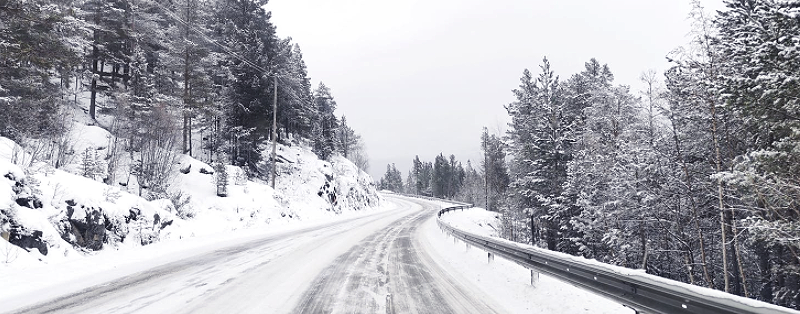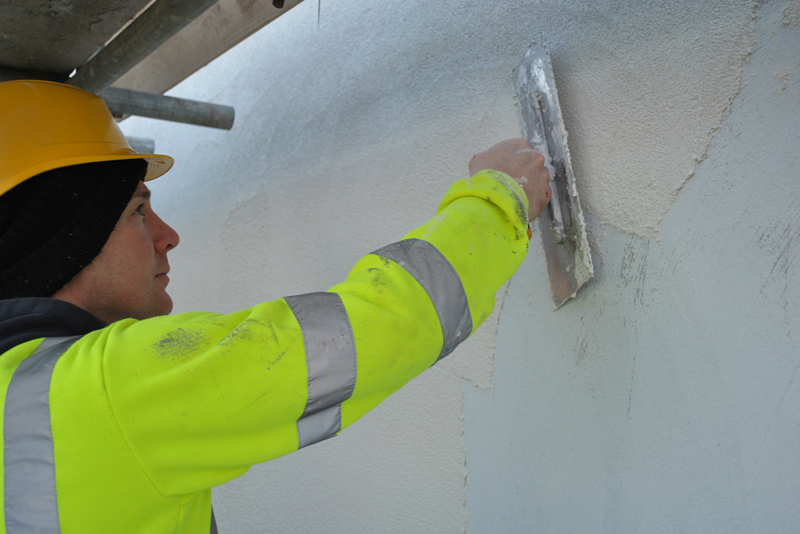
As winter approaches, Joe Ragdale, Technical Director for Wetherby Wall Systems, discusses how to combat the inherent issues of installing render and External Wall Insulation in adverse weather conditions.
The 21st of December is officially the first day of winter, and many renderers and External Wall Insulation installers are already having to deal with the cold and icy weather conditions that can cause a range of setbacks on site.
With the vast majority of EWI render finishes only suitable for application in dry conditions (with temperatures above 5°C), cold and wet weather can pose a major problem for contractors and installers, who are working to strict programmes and tight deadlines. They simply cannot afford unforeseen delays, nor have to face their render system failing due to adverse weather.
Joe Ragdale, Technical Director at Wetherby Wall Systems Limited, has been providing advice on winter working for the best part of 20 years. Here he shares several hints and tips to help contractors and applicators continue working this winter.
“There are various factors to consider to ensure a successful EWI and render application during cold, winter months. The first point I’ll make is one of vital importance. External wall insulation and external render projects should only be undertaken when weather conditions are favourable. If a project starts and the system subsequently fails (due to it being installed in bad weather), it will inevitably increase time and costs in the long-term.
“Atmospheric humidity in the UK can cause headaches for applicators, and with analysts stating that the frequency of extreme rainfall in the UK is increasing, this problem looks set to continue. Therefore, it is vital, that contractors have some method of assessing the outdoor atmospheric humidity (such as a hygrometer), each day before the commencement of works. As a rule of thumb, relative humidity should be below 90% if external renders are to be allowed to cure correctly. Above this level, the render will not properly dry out, leaving the finish wet on the wall until humidity lowers.
“Ensuring the right conditions during application is the only real way to guarantee EWI systems cure correctly and perform effectively. Protecting working areas is another solution. Sheeting scaffolding and using industrial heaters to provide consistent temperatures above 5°C is possible, but this is not always practical.
“Installers should always ensure that products are correctly mixed, applied, protected from the elements, and allowed to sufficiently cure to prevent wash-offs. Damaged render from wash-offs will need scraping off and replacing, causing further setbacks.

better suited to cold and icy conditions.
“Finally, product selection is a hugely important factor when working in winter conditions, since certain systems cope better in cold, wet weather. Realistically, it is the final finish that should be carefully considered, since this is the material that will remain exposed to the elements.
“Traditional silicone and acrylic renders are not particularly tolerant to wet/cold days as they depend on the correct condition to cure. Mineral renders cure independently of humidity so therefore can be better suited to these conditions. The standard off white mineral render finish can be visually transformed with two coats of coloured Silicone Paint.
“Alternatively, enhanced Silicone renders such as the innovative Wetherby Four Seasons Silicone Render 4S is specifically designed for cooler and wetter conditions, curing quicker and in humidity up to 95%.
“In the UK, cold and wet weather will always be a problem for EWI installers, and periods of adverse weather conditions will inevitably cause delays. The best advice I can offer contractors and installers is to speak directly to their EWI system manufacturers. Their technical teams face these same issues year on year. They are highly-experienced in finding ways to combat the issues inherent with installing EWI in winter conditions and ensuring that failures remain minimal.”
For further information on Wetherby Wall Systems or any of the products in its portfolio log onto www.wbs-ltd.co.uk or call 01942 717100.
 01942 717 100
01942 717 100

 01942 717 100
01942 717 100

